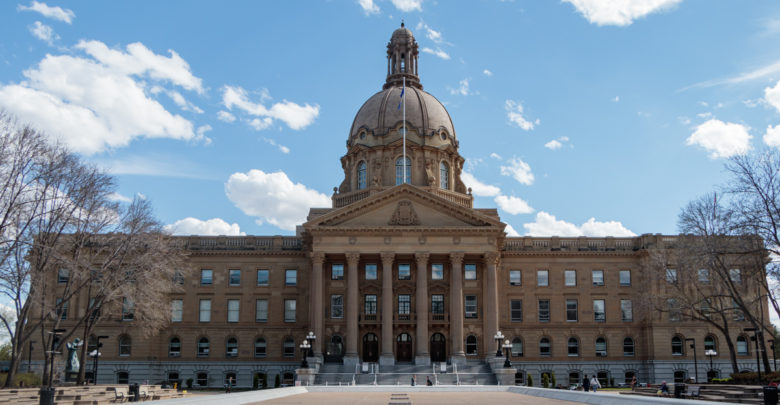BREAKING: Budget 2022’s impact on post-secondary education
Budget 2022 unveiled new programs, funding, and developments for post-secondary institutions.
 Christien Ford
Christien FordBudget 2022 unveils a new program to provide investments for economic areas with skill shortages — which includes funding for post-secondary education.
Released on February 24, 2022 by Finance Minister Travis Toews, Budget 2022 will expand on programs and funding provided by Budget 2021, operating off a “modest surplus” due to an increased price of oil. Due to this surplus, the Government of Alberta estimates a total $50.1 billion will be spent in Budget 2022, an increase of $1.1 billion from $49 billion in Budget 2021.
Alberta at Work provides funding for developing skills, invests $264 million in post-secondary
In the provincial government’s newest program, Alberta at Work, the government will provide a total of $600 million over the next three years to help Albertans find jobs. This new initiative includes five major components, the second of which focuses on post-secondary training and trades education. Under this program, the government will invest $264 million in “targeted supports” to the advanced education system.
The largest investment in Alberta at Work puts $171 million towards enrolment expansion in areas with skills shortages, such as areas of technology, agriculture, financial services, and aviation. The government will disperse $57 million annually, creating approximately 7,000 additional post-secondary seats.
Additionally, $30 million will be allocated for apprenticeship expansion at a rate of $10 million per year. Half of this allocation will enable around 300 students to acquire skills for emerging technology sectors and other in-demand jobs, while the remaining half will be used to support programs like Women Building Futures and CAREERS: The Next Generation.
Alberta at Work will also supplement money allocated for Indigenous engagement. Training opportunities for Indigenous people will receive $5 million, with $1 million being provided in the first year, and $2 million in the two years following.
Operating funding remains largely unchanged from last year, post-secondary institutions projected to fund a majority of their operating expenses in 2022-23 fiscal year
The Government of Alberta is projected to increase operational expense funding for advanced education by $4 million in 2022-23. This marks the first time in three years the provincial government has not decreased operational expense funding for post-secondary education. Budget targets for future years show the government plans to decrease the amount of operational funding to post-secondary institutions by $52 to $50 million, which will be supplemented by institutions’ own revenues or reserves.
This increase in own-source spending by post-secondary institutions is reflective of an expected increase in student tuition.
Post-secondary institutions paid a forecasted $2.4 billion of operating expenses in the 2021-22 fiscal year, an increase from Budget 2021’s estimate of $2.25 billion. Budget 2022 expects post-secondaries to fund $2.6 billion from their own reserves, with an expectation for this number to steadily increase in the coming years to offset reduced provincial funding.
For the 2022-23 fiscal year, Budget 2022 estimates post-secondary institutions will fund 53 per cent of operating expenses. This is going to increase from a forecasted 50 per cent in 2021-22 to 53 per cent to reflect this $224 million increase expected to be funded by post-secondaries.
The budget made no mention of the performance-based funding system, first implemented last year. However, the government does plan to expand performance-based funding in the 2022-23 fiscal year. For the 2021-22 year, the funding system tied five per cent of the Campus Alberta Grant — an annual grant for post-secondaries to access operational funding — to one metric based on an institution’s ability to provide work-integrated learning opportunities to students. This year, the performance-based funding system is increasing that portion to 15 per cent.
U of A Hospital and Stollery Children’s Hospital to receive funding in capital plan
Budget 2022 provides a total of $2.2 billion towards expanding health care system capacity in the next three years. This investment includes funding for the University of Alberta Hospital Brain Centre and the Stollery Children’s Hospital.
Specifically, the Neurosciences Intensive Care Unit at the U of A Brain Centre is projected to receive $50 million over the next three years. This funding is estimated to increase the ICU capacity from 11 to 24 beds, in addition to constructing 18 new inpatient beds at the U of A Hospital. The Stollery Children’s Hospital is also receiving funding for their Critical Care Program in 2022-23, in a one-year investment of $3 million.
Expansion of work-integrated learning programs
Budget 2022 invests $6 million over three years to expand work-integrated learning programs at Alberta post-secondary institutions. These programs provide students with paid work experience, giving students hands-on experience in their field of interest.
Whereas the pilot work-integrated learning program — previously launched under the Alberta 2030 initiative — provided work experience for students in Alberta’s key industries, the new funding in Budget 2022 will cover a broader net of industries. More details are expected to be announced later.
U of A Dentistry Pharmacy Building renewal to receive $56 million in funding
As part of the Government of Alberta’s capital investment, the University of Alberta’s ongoing Dentistry Pharmacy Building renewal project will receive $56 million in Budget 2022. This funding is going specifically to functional renewal of the building, receiving over half of the $100 million allotted to similar projects and redevelopments in the province. The funding for the Dentistry Pharmacy Building is consistent with promises from the previous two provincial budgets.
$59 million invested into veterinary school at U of C
Under the Alberta at Work program, the government will invest $59 million into the veterinary medicine school at the University of Calgary. This funding is meant to address the shortage of large animal veterinarians in rural Alberta.
While stakeholders, such as the Alberta Beef Producers, have highlighted this shortage over a number of years, the COVID-19 pandemic has exacerbated the shortage. U of C has the only veterinary program in Alberta and is one of only five programs in Canada.




